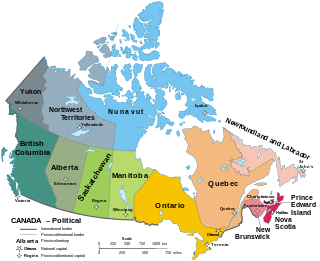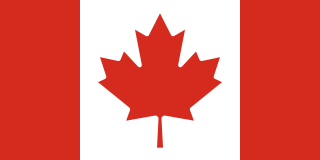
The Northwest Territories, one of Canada's territories, has established several territorial symbols. [1]

The Northwest Territories, one of Canada's territories, has established several territorial symbols. [1]
| Symbol | Image | Adopted | Remarks | |
|---|---|---|---|---|
| Coat of arms | Coat of arms of Northwest Territories |  | February 24, 1956 [1] | Granted by royal warrant of Queen Elizabeth II. |
| Flag | Flag of Northwest Territories | January 1969 [1] | Adopted by the Council of the Northwest Territories, designed by Robert Bessant. | |
| Shield of arms | Shield of arms of Northwest Territories | February 24, 1956 | Granted with other elements of the coat of arms | |
| Seal | The Seal of the Northwest Territories | November 29, 1956 [1] | The Seal of the Northwest Territories consists of the coat of arms of the NWT encircled by the words, "The Seal of the Northwest Territories." | |
| Mace | The Mace of Northwest Territories |  | January 2000 [1] | It is the symbol of the Authority of the Legislative Assembly. It is a ceremonial staff carried by the Sergeant-at-Arms into the Chamber. |
| Flower | Mountain avens Dryas octopetala |  | June 1957 [1] | It grows abundantly in the eastern and central Arctic, as well as in parts of the Mackenzie River |
| Bird | Gyrfalcon Falco rusticolus |  | 1990 [1] | They are found throughout the tundra, including all the Canadian Arctic Archipelago. |
| Tree | Tamarack larch Larix laricina |  | September 9, 1999 [1] | Replaced the jack pine as territorial tree in 1999. |
| Fish | Arctic grayling Thymallus arcticus | September 9, 1999 [1] | Found in various habitats in the Northwest Territories. | |
| Mineral | Gold |  | May 1981 [1] | Gold has played a major role in the development the Northwest Territories. |
| Gemstone | Diamond |  | September 9, 1999 [1] | The first Canadian diamond mine was opened in the Northwest Territories. |
| Tartan | White, green, yellow, red and blues | 1961 due to the efforts of the Edmonton Rehabilitation Society for the Handicapped. | The tartan is registered at the Court of the Lord Lyon, King of Arms of Scotland | |
| Territorial Symbol | Polar bear |  | ||

The Northwest Territories is a federal territory of Canada. At a land area of approximately 1,127,711.92 km2 (435,412.01 sq mi) and a 2021 census population of 41,070, it is the second-largest and the most populous of the three territories in Northern Canada. Its estimated population as of the second quarter of 2024 is 44,936. Yellowknife is the capital, most populous community, and the only city in the territory; its population was 20,340 as of the 2021 census. It became the territorial capital in 1967, following recommendations by the Carrothers Commission.

Victoria Island is a large island in the Arctic Archipelago that straddles the boundary between Nunavut and the Northwest Territories of Canada. It is the eighth-largest island in the world, and at 217,291 km2 (83,897 sq mi)1 in area, it is Canada's second-largest island. It is nearly double the size of Newfoundland (111,390 km2 [43,010 sq mi]), and is slightly larger than the island of Great Britain (209,331 km2 [80,823 sq mi]) but smaller than Honshu (225,800 km2 [87,200 sq mi]). The western third of the island lies in the Inuvik Region of the Northwest Territories; the remainder is part of Nunavut's Kitikmeot Region. The population of 2,168 is divided between two settlements, the larger of which is Cambridge Bay (Nunavut) and the other Ulukhaktok.

Canada has ten provinces and three territories that are sub-national administrative divisions under the jurisdiction of the Canadian Constitution. In the 1867 Canadian Confederation, three provinces of British North America—New Brunswick, Nova Scotia, and the Province of Canada —united to form a federation, becoming a fully independent country over the next century. Over its history, Canada's international borders have changed several times as it has added territories and provinces, making it the world's second-largest country by area.

Devolution is the statutory delegation of powers from the central government of a sovereign state to govern at a subnational level, such as a regional or local level. It is a form of administrative decentralization. Devolved territories have the power to make legislation relevant to the area, thus granting them a higher level of autonomy.

The flag of the Northwest Territories, is the subnational flag of the Northwest Territories of Canada. It was adopted in 1969 by the Legislative Assembly of the Northwest Territories.

The flag of Yukon is a green, white, and blue tricolour with the coat of arms of Yukon at the centre above a wreath of fireweed, the territorial flower. An official flag for Yukon was created during the 1960s, a decade in which the national flag of Canada was chosen as well as several other provincial flags were created. The flag of Yukon was officially selected from a territory-wide design competition in 1967, with the winning design adopted on March 1, 1968.

The Gwichʼin language belongs to the Athabaskan language family and is spoken by the Gwich'in First Nation (Canada) / Alaska Native People. It is also known in older or dialect-specific publications as Kutchin, Takudh, Tukudh, or Loucheux. Gwich'in is spoken primarily in the towns of Inuvik, Aklavik, Fort McPherson, and Tsiigehtchic, all in the Northwest Territories and Old Crow in Yukon of Canada. In Alaska of the United States, Gwichʼin is spoken in Beaver, Circle, Fort Yukon, Chalkyitsik, Birch Creek, Arctic Village, Eagle, and Venetie.

The coat of arms of the Northwest Territories was granted by a Royal Warrant of Queen Elizabeth II on 24 February 1956. The shield is also featured on the territorial flag. The coat of arms was designed by Canadian heraldry expert Alan Beddoe in the early 1950s.

Regional tartans of Canada are represented by all Canada's provinces and territories having a regional tartan, as do many other regional divisions in Canada. Tartans were first brought to Canada by Scottish settlers; the first province to adopt one officially was Nova Scotia in 1956, and the most recent province was Ontario, in 2000. Except for the tartan of Quebec, all of the provincial and territorial tartans are officially recognized and registered in the books of the Court of the Lord Lyon, King of Arms of Scotland.

The Viking Symbol Mystery is Volume 42 in the original The Hardy Boys Mystery Stories published by Grosset & Dunlap.
The Northwest Territories is a territory of Canada. It has an area of 1,171,918 square kilometres and a population of 41,786 as of the 2016 Canadian census.

The Indigenous peoples of the Pacific Northwest Coast are composed of many nations and tribal affiliations, each with distinctive cultural and political identities. They share certain beliefs, traditions and practices, such as the centrality of salmon as a resource and spiritual symbol, and many cultivation and subsistence practices. The term Northwest Coast or North West Coast is used in anthropology to refer to the groups of Indigenous people residing along the coast of what is now called British Columbia, Washington State, parts of Alaska, Oregon, and Northern California. The term Pacific Northwest is largely used in the American context.

The following outline is provided as an overview of and topical guide to Canada:

The following is an alphabetical list of articles related to the U.S. state of Ohio.

Canadian heraldry is the cultural tradition and style of coats of arms and other heraldic achievements in both modern and historic Canada. It includes national, provincial, and civic arms, noble and personal arms, ecclesiastical heraldry, heraldic displays as corporate logos, and Canadian blazonry.

The following outline is provided as an overview of and topical guide to the U.S. state of Idaho:

The following outline is provided as an overview of and topical guide to the U.S. state of Illinois: